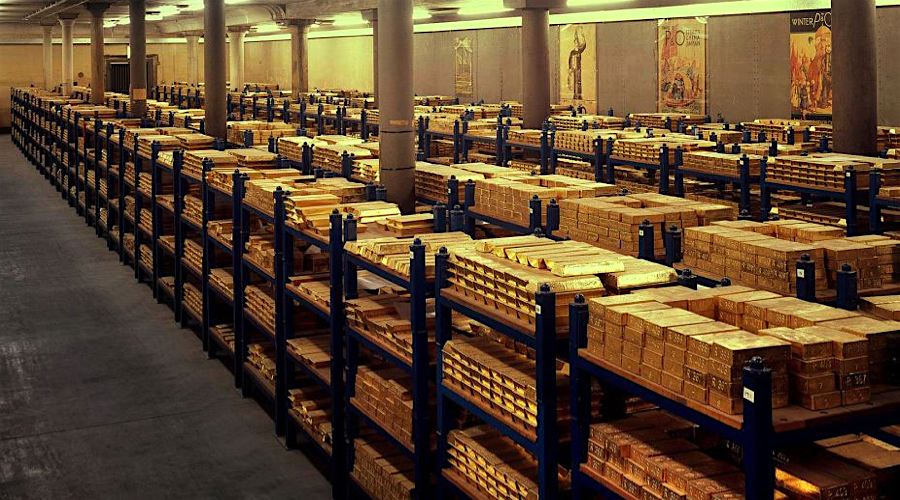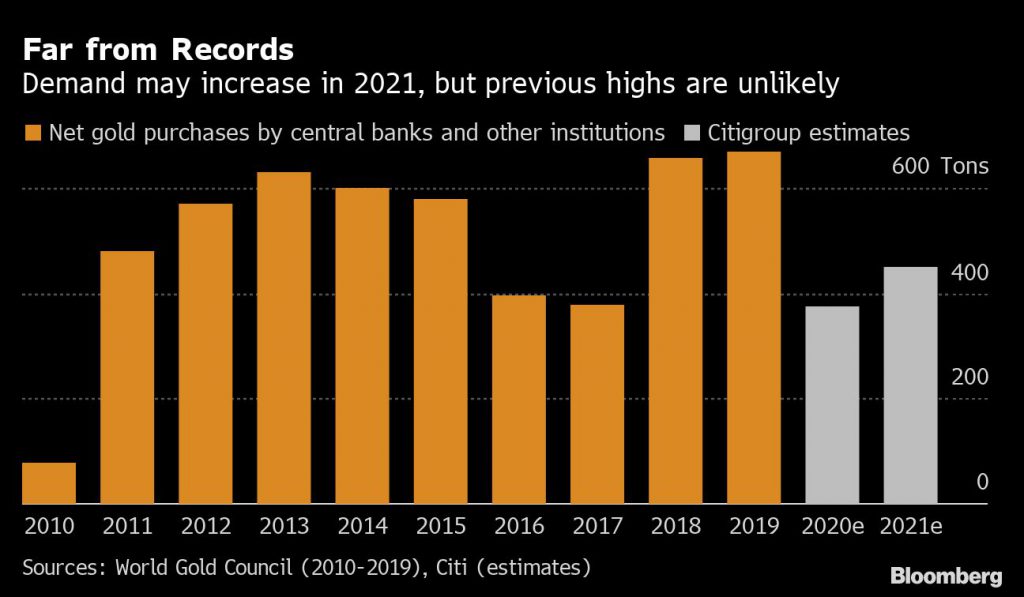Central bank gold buying to climb from near decade low

Gold buying by central banks, an important driver of bullion’s advance in recent years, is forecast to pick up in 2021 after a slowdown this year.
Citigroup Inc. sees demand from the official sector rising to about 450 tons after a drop to 375 tons this year, which would be the lowest in a decade. HSBC Securities (USA) Inc. expects a slight up-tick to 400 tons from an estimated 390 tons in 2020, potentially the second-lowest amount in 10 years.

While the forecasts are far from the near-record purchases of more than 600 tons a year seen in both 2018 and 2019, increased central bank activity will help bolster bullion. Russia could return to the market next spring and China’s central bank may resume adding to reserves after the U.S. elections, Citi said in a report this month.
This development may have a bigger impact on the market if exchange-traded funds — key drivers of demand in 2020 — slow their buying as global economies recover from the coronavirus pandemic.
“Although official sector gold demand was quite robust in 2019 and 2018 and is softer this year, it is not necessarily weak by historical standards,” said James Steel, chief precious metals analyst at HSBC. “While the influence of central bank activity should not be discounted, it is taking a backseat to ETFs and other forms of demand this year.”
Bullion prices and ETF assets surged to a record in 2020 as investors sought havens amid the pandemic
Bullion prices and ETF assets surged to a record in 2020 as investors sought havens amid the pandemic, looser monetary policy and the potential debasement of fiat currencies. Spot gold has since dropped from its all-time high and is set for the biggest monthly loss since 2016, but is still poised to cap an eighth quarterly gain, supported by sustained flows into ETFs.
Colombia and Uzbekistan have been among countries that reduced their gold reserves in recent months, and the Philippines has said it’s considering selling. Russia announced it would cease purchases from April, while it’s been almost a year since China disclosed any moves.
“Net central bank purchases have slowed down but are still positive, so there is no risk that central banks become a source of downward pressure on prices like they were in the 90s,” said Bernard Dahdah, senior commodities analyst at Natixis SA.
While central banks were net buyers for a 10th straight year in 2019, demand has become more concentrated, with fewer banks adding to reserves in 2020, according to the World Gold Council. Purchases dropped 39% to 233 tons in the first half from the same period a year ago.
Each central bank determines the gold allocation that is optimal for its own situation, according to Shaokai Fan, head of Central Banks Relationships at the WGC. Some may have reduced holdings because the percentage of bullion in their reserves has become high, particularly as prices increased or because they’ve had to draw down on the non-gold portion of their reserves to maintain currency stability, he said.
Standard Chartered’s precious metals analyst Suki Cooper also expects central banks to remain net buyers despite the selling that has emerged, but sees purchases easing to 400 tons next year from 417 tons in 2020. Citigroup’s projections are more optimistic, basing it’s forecast for a rebound on expectations for higher oil prices and stronger global growth.
“The broader push to buy gold is clear amid a longer-term de-dollarization trend and a bias toward reserve diversification,” said Aakash Doshi, head of commodities for North America at Citi Research.
(By Ranjeetha Pakiam and Elena Mazneva, with assistance from Terrence Edwards)
More News
Gold, silver and miners haven’t declined despite USD’s bottom – yet
Gold and miners can top literally any day now.
September 22, 2025 | 03:01 pm
{{ commodity.name }}
{{ post.title }}
{{ post.date }}

Comments